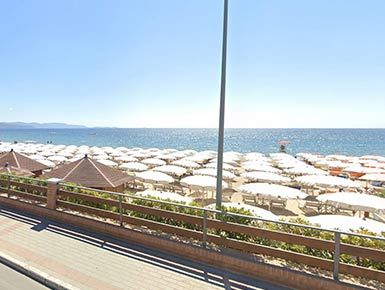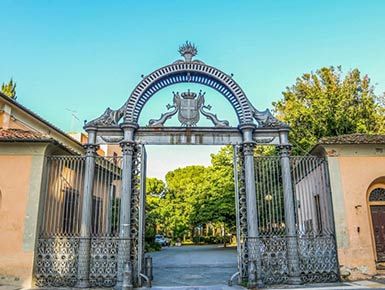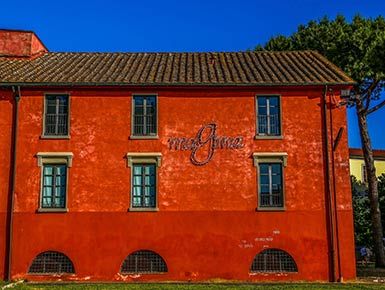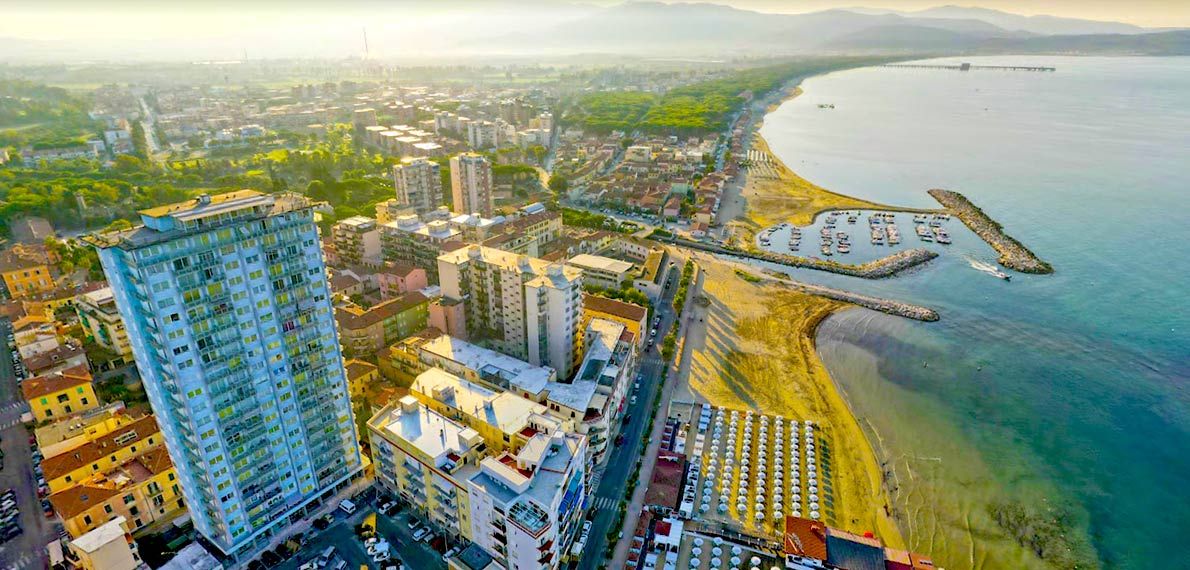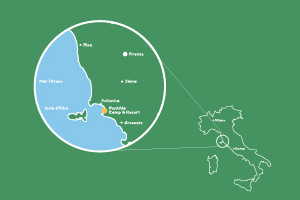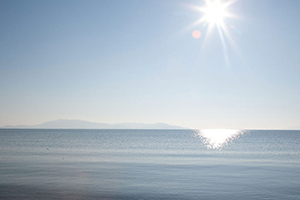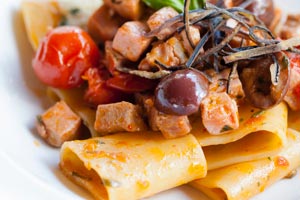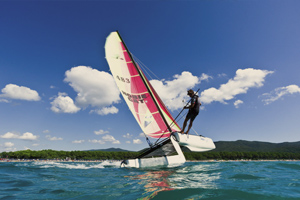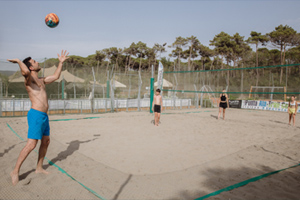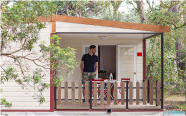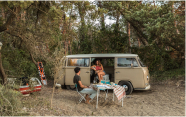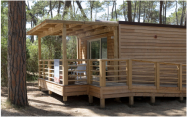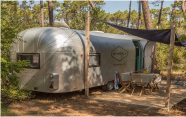Follonica
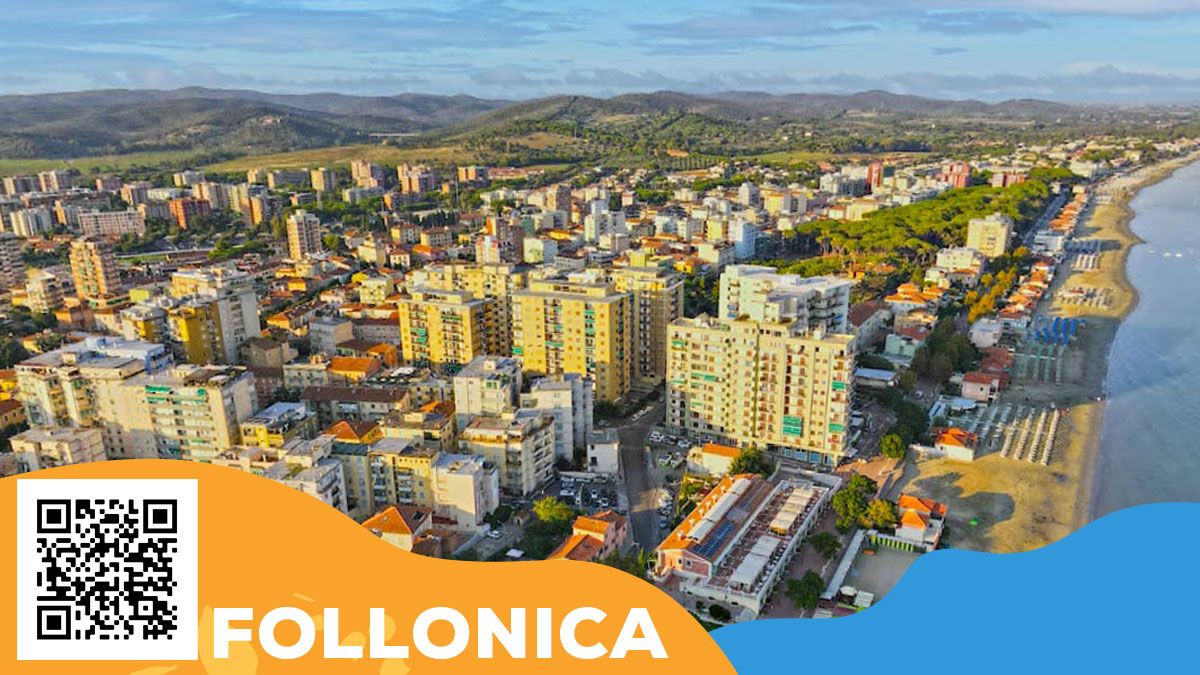
Follonica is a popular tourist destination and is renowned both for its charming beaches, suitable for all tastes, and for the breathtaking views inland. The beach, located in the heart of the city, a stone's throw from the historic centre, is remarkably organised thanks to the wide range of services on offer, the presence of various shops, and the rich choice of bars and restaurants. To the north, there are less crowded but equally organised beaches, such as Il Boschetto and Cordial. To the south, there is the Levante pine forest with the Colonia Marina beach and La Polveriera. Follonica is not only sea: it offers cultural attractions, such as the Church of San Leopoldo, the Pinacoteca Civica, and the Museum of Cast Iron Arts of the Maremma (MAGMA). It also offers a wide range of accommodation, from central to more reserved. Finally, Follonica is easily reached by car or train.
The Beaches of Follonica
Follonica's beaches are the main attraction that invites tourists from all over the world. There is a vast city beach, assiduously frequented by residents, while the beaches to the north and south offer a more exclusive, often secluded atmosphere, with pine forests, trees and Mediterranean scrub providing the backdrop.
The town beach of Follonica
A peculiarity of Follonica's city beach lies in its proximity to the historic centre. The Viale Italia, which winds along the coast, is transformed into a pedestrian zone and becomes a charming promenade. The beach is mainly organised with numerous bathing establishments where sunbeds and umbrellas can be rented, as well as services such as hot and cold showers, changing rooms and lifeguards. Here one can rent a pedalo and enjoy the bars and restaurants by the sea, in an environment that perfectly combines beach and city life. Behind the beach, in fact, there are hotels, shops, ice-cream parlours, bars and restaurants.
Follonica's beach closest to the city is divided into two parts by the mouth of the canal, which has created a small bay where the Cala Violina nautical club is located. Beyond it, the beach continues: here you will notice a singular feature, namely that the houses, many of which are rented to tourists during the summer, face directly onto the sand.
The beaches north of Follonica
North of Follonica there are several beaches that are less crowded than the town beach, some of them even reserved, however, since they are much smaller, they can be crowded, especially on weekends in August.
Il Boschetto Beach
Located at the northern end of the municipality of Follonica, Spiaggia Il Boschetto overlooks a small pine forest and is intended for guests of the Il Boschetto hotel and restaurant.
Cordial Beach
Cordial Beach, a small beach extending beyond Il Boschetto, is reserved for customers of the Pelagone golf club. The beach is equipped with parasols and sunbeds, and offers a range of services such as toilets and changing rooms. The area above the sand dunes, in the shade of maritime pines, is particularly attractive and ideal for complete relaxation.
Swiss Village Beach
Spiaggia Villaggio Svizzero is the beach at the Golfo del Sole resort, small but very well organised, bordered by a series of breakwater barriers that ensure a calm, crystal-clear sea even on windy days. Perfect for families with children.
Former Tony's Beach
The former Tony's Beach is popular with young people. It is a free beach so called because of Tony's Beach Bar located nearby. It offers plenty of space for planting beach umbrellas, although it is very busy in summer.
Beaches south of Follonica
South of Follonica is the beautiful Levante pine forest, one of the city's main green lungs. Several bathing establishments can be found here, as well as several stretches of free beach.
Colonia Marina Beach
The Colonia Marina Beach is clean and tidy, ideal for children, although it does not offer many facilities. The beach is free and also accessible to dogs, and the Levante pine forest immediately behind it makes it perfect even for the hottest summer days. Its strength lies in being close to the city centre, yet in a quiet and secluded location.
La Polveriera beach
Spiaggia La Polveriera is located at the southern end of Follonica, a long sandy beach reachable from the centre in about 20 minutes by bicycle or slightly less by car, considering the time needed to find parking. Here you will be greeted by a beach of light-coloured and very fine sand, with a seabed that slowly slopes down, making the water very clear.
What to see in Follonica
Follonica's attractions are a rich subject. Although Follonica is predominantly known as a seaside destination, it offers a range of cultural attractions to explore. When you decide to take a break from beach life and immerse yourself in the local culture, these are the must-see destinations.
Church of St Leopold
The Church of San Leopoldo is one of the distinctive symbols of Follonica, built in 1836 on the initiative of Leopold II of Lorraine. The building's uniqueness lies in its intensive use of cast iron, an unusual material for places of worship. The entrance, flanked by double columns, accentuates its originality. The interior has a single nave, arranged in the shape of a Latin cross, with a cross vault. Among the interior works not to be missed are the marble bust of Raffaele Sivieri, the statue of St John the Baptist and the Madonna and Child, also known as Madonna Ilvania.
Comprensorio ex ILVA
The Comprensorio ex ILVA is a significant witness to Follonica's industrial history. Leopold II of Lorraine, in his vision to create a city-factory, gave life to this industrial pole, which can now be visited for a journey into the past. The Bottaccio, Cancello Magonale, the Condotta houses and the foundries, including the Leopolda Foundry Theatre, are among the historic buildings that emerge from the area.
Bandite di Scarlino
The Bandite di Scarlino are a protected natural area covering over 8,000 hectares. They offer the possibility of observing rare bird species such as the short-toed eagle and grey shrike, as well as a wide range of flora and fauna. The park offers hiking and mountain biking trails.
Follonica Civic Art Gallery
Follonica's Pinacoteca Civica is a must for art lovers. Inside, a contemporary art collection showcases the works of local artists alongside internationally renowned names. Exhibitions and displays are constantly organised inside the Pinacoteca, which offers two floors of exhibition space.
MAGMA (Museum of the Cast Iron Arts of the Maremma)
Finally, the MAGMA (Museum of the Cast Iron Arts of the Maremma), located in the Forno San Ferdinando, narrates the history of industrial archaeology through the use of advanced multimedia technologies. The museum, part of the ex-ILVA area, is open all year round, except Mondays. Before planning your visit, it is advisable to check the opening hours on the official website.
Where to stay in Follonica
Follonica, with its approximately 20,000 inhabitants, offers a wide range of accommodation. If the idea of being in the heart of the town's activity appeals to you, you might consider staying close to the centre. This location offers you an abundance of bars and restaurants, plenty of shopping opportunities, and the convenience of the city beach.
If, on the other hand, your idea of a holiday is to stay somewhere more private and surrounded by nature, then you should head north. Here you will find hotels located a short distance from the sea, surrounded by lush Mediterranean vegetation, and equipped with all the necessary facilities for a comfortable stay.
For those seeking peace and quiet, the area south of Follonica may be the ideal choice.
Although accommodation facilities are not numerous in this area, there are a couple of campsites and a few hotels. This area is perfect for those who wish to enjoy a peaceful and relaxing environment.
The Origins of Follonica
Tourism has not always been the source of Follonica's wealth. Tourism, as the main industry and prevalent area of employment, has only developed since the 1960s.
Thanks to its geographical position and the morphology of its territory, in the 19th century Follonica was a landing and processing point for iron ore that arrived here transported by small boats.
It was the Grand Duke of Tuscany Leopold II who founded the Royal and Imperial Foundry in 1834.
But even before this event, the Follonica area linked its history to that of the iron and steel industry and the construction of the Appiani family foundry in Piombino in the 16th century.
The history of these foundries saw a succession of different owners and different names over time, until the name was changed to 'ILVA' in 1918. Today, this company, a symbol of the Italian iron and steel industry, has relocated its plants to other Italian regions.
Map of Follonica
How to reach Follonica
Follonica, thanks to its location along the SS1 Aurelia, is easily accessible for those travelling along the Tuscan coast. The city centre is located a short distance from the Follonica Nord exit.
Coming from Pisa, the drive takes approximately one hour and 25 minutes, while from Livorno you can reach Follonica in one hour and 10 minutes.
Coming from Florence, the distance to cover is longer, taking approximately 2 hours and 15 minutes.
Driving on the Florence-Pisa-Livorno superhighway, which later joins the A12 motorway at the Collesalvetti junction. From Rosignano Marittimo, you return to the SS1 Aurelia and continue to Follonica.
Follonica also offers the option of arriving by train, as it is served by a station on the Tirrenica railway line, which connects Pisa to Rome, also touching on Livorno. To reach Follonica by train, it is necessary to first pass through one of these cities. The train journey from Florence can vary between 2 and 3 hours. Once you get off at Follonica station, you only have to walk 800 metres to get to the sea.
Where Follonica is located
Follonica is located in the province of Grosseto, immersed in the Maremma coast, framed by the promontories of Piombino and Punta Ala. It shares its territorial limits with the municipalities of Massa Marittima and Scarlino. Its location makes Follonica a fascinating place between sea and nature.
